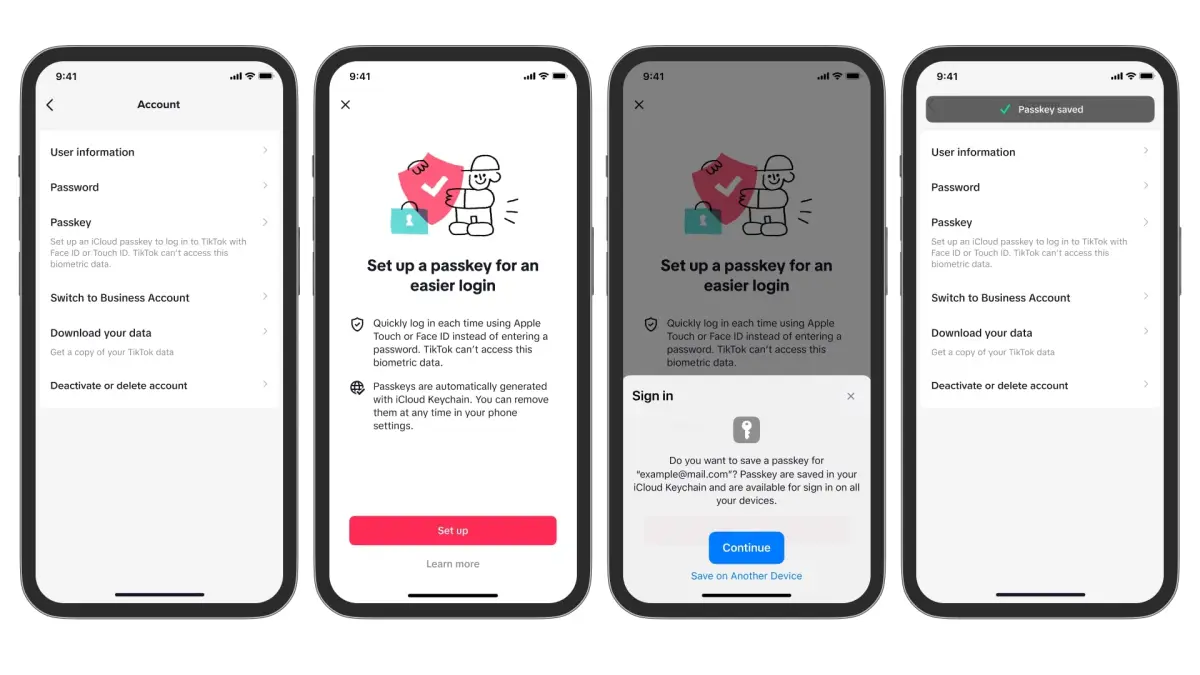In recent years, TikTok has taken the world by storm, becoming one of the most popular social media platforms. With its user-friendly interface, entertaining short videos, and massive global community, it has become an essential part of modern social networking. As the platform continues to evolve, its developers have recognized the importance of enhancing user security. In a recent update, TikTok has introduced support for passkeys on iPhones, taking a significant step towards bolstering the safety and privacy of its users..
Understanding Passkeys
A passkey, also known as a passcode or PIN, is a form of authentication used to secure access to a device or application. Unlike traditional passwords, passkeys are typically shorter numeric codes that are easier to remember, yet remain robust enough to safeguard against unauthorized access. By introducing this feature, TikTok aims to provide its users with an additional layer of security beyond the typical username and password combination.
Now Sign in to TikTok effortlessly with Touch ID or Face ID instead of passwords! Introducing passkeys, the password replacements that use encrypted biometric authentication methods available on your device to verify your identity.
TikTok is now launching passkeys for iOS in select regions, including Asia, Africa, Australia, and South America. But don’t worry, more regions and operating systems will be included soon, so a U.S. and Android launch is on the horizon.
With passkeys, all your biometric data stays securely on your device and is never accessed or processed by third-party apps, like TikTok. iOS users can now choose to use passkeys to sign in to their TikTok account directly from their iCloud account across all devices.
Enabling a passkey is easy. Just go to the app’s settings, select the new “Passkey” option, follow a few simple steps, and click “continue” on the iOS system prompt to save your passkey. Enjoy a seamless and secure sign-in experience with TikTok
TikTok has introduced passkeys as a solution to simplify the login process and enhance account security. By eliminating traditional passwords, which are prone to being stolen, forgotten, or reused across multiple accounts, passkeys provide a more secure and reliable authentication method.
Furthermore, apps like TikTok are unable to access any biometric data utilized in the authentication process on iOS devices. This ensures that all biometric authentication data remains securely stored on users’ devices, minimizing the risk of unauthorized access.

In a significant move, TikTok has joined the FIDO Alliance, a nonprofit organization dedicated to establishing authentication standards at the client and protocol levels. This collaboration, which also includes tech giants Apple, Google, and Microsoft, aims to eliminate the need for passwords in user authentication across various platforms. Apple’s recent announcement of Passkeys at the Worldwide Developer Conference (WWDC) in June 2022 further highlights the industry’s shift towards passwordless authentication.
The FIDO Alliance’s Executive Director, Andrew Shikiar, emphasizes the importance of passwordless authentication in improving security and user experience. By adopting open standards developed by the FIDO Alliance, leading service providers like TikTok are empowering users with easier access to the platform.
In conclusion, the introduction of passkeys by TikTok, along with their participation in the FIDO Alliance, signals a significant advancement in authentication methods. By embracing passwordless authentication, TikTok and other service providers aim to provide a more secure and user-friendly experience for their users.
Enabling Passkeys on TikTok for iPhone
To enable passkeys on TikTok, iPhone users can follow a simple process within the app’s settings. Upon updating to the latest version of TikTok, users will find the new “Passkey” option in the security settings menu. After selecting this option, users will be prompted to set up a unique passkey of their choice. The passkey can be any combination of numbers, making it easier for users to remember while maintaining its effectiveness as a security measure.
